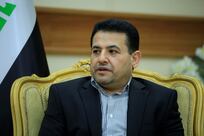Standard Chartered yesterday reported a “low double-digit” rise in profit for the Middle East, North Africa and Pakistan during the first quarter of the year. Group income fell.
The regional gains were reported yesterday by a Dubai-based spokesman. Standard Chartered does not publish full quarterly results.
The rise was attributed to lower costs and lower loan impairments across the lender’s retail and wholesale bank businesses, the spokesman said, giving no further details.
The first quarter performance in the region was in contrast to that of the group as a whole, which reported a “low single-digit percentage” fall in group income, according to an interim management statement.
The bank, which is based in London but makes most of its money in Asia, blamed the fall in income on local currency weaknesses, particularly in the Indian rupee and Indonesian rupiah, noting that group income was up slightly on a constant currency basis.
Broad-based growth across several markets was offset by weaker performance in other markets, the bank said, with income in its South Korean business alone down by US$110 million year on year.
Standard Chartered took a $1 billion hit on the value of its Korean business last year, amid a rise in bad debts and tougher bank regulations in the country.
Income from consumer banking was down by a mid-single digit rate, while wholesale banking income was flat, the bank said.
Standard Chartered’s shares in Hong Kong closed up by 1.3 per cent, with its shares in London were up by more than 3 per cent in early trading.
jeverington@thenational.ae
Follow us on Twitter @Ind_Insights




